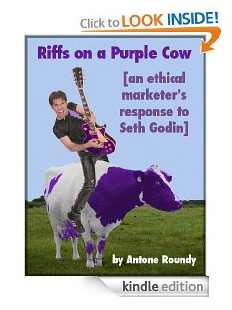When you purchase through links on our site, we may earn an affiliate commission (details)
How to Position Yourself Within Your Niche
When people talk about niche selection, the conversation often starts with advice like "look for a flush, hungry crowd." In other words, you're looking for a) lots of people, b) who really want something badly, and c) have money to spend on it. Add to that that you need to be able to reach them, and you've got a good niche.
The bad news is that the better the niche, the more people you're going to be competing with. To win, you've got to bring something unique to the table.
The good news is that, as I wrote a few days ago, you don't necessarily have to be "the best". You've got to be good. You've got to be worth what you charge. But just because only one person in the world can be "the best", that doesn't mean there can only be one player in a niche.
Yesterday, I suggested a simple method for coming up with a unique angle for your marketing:
- Grab a sheet of paper and write down everything you're interested in.
- Start combining.
Even in a market where the product is 100% commoditized, you can stand out by spicing up your marketing with something unrelated.
Consider a riddle: "What do ducks, geckos and cavemen have to do with insurance?"
Answer: "Nothing." But I'll bet you know exactly what I'm referring to -- the Aflac and Geico ads.
Today, I want to expand a little on yesterday's process.
Let's call the interest that you're selling to -- the one you're naming your niche by -- the "primary interest". Any other interests you mix into your marketing we'll call "secondary interests."
Your primary interest needs to have a flush, hungry crowd.
A lot of your interests won't be good niches because they're missing one of the those components. But that doesn't mean those interests are useless for marketing. In fact, some of them may be ideal secondary interests.
Think about it -- if you're selling underwater basket weaving supplies (a huge market with scads of disposable income :-), it really doesn't matter if nobody's willing to spend a single penny on sudoku puzzles. If enough underwater basket weavers love sudoku and you can find a way to weave sudoku into your basket marketing, you've got your unique angle.
Here's a more detailed version of the process:
- List all your interests.
- List those where there's a flush, hungry crowd.
- List those that people are highly interested in (even if they don't spend anything on them).
- Look for ways to combine members of the first list with members of the second.
If there's a large enough group that can be reached with one combination, that's a winner. If only a subset of members of your primary market share your secondary interests, but are rabidly interested in your secondary interest, consider whether owning that sub-niche would be enough.
If not, you may need to cater to multiple sub-niches by picking multiple secondary interests. Just be sure that you're not turning members of each sub-niche off when you talk about the other one.
What do you think -- sounds reasonable?




